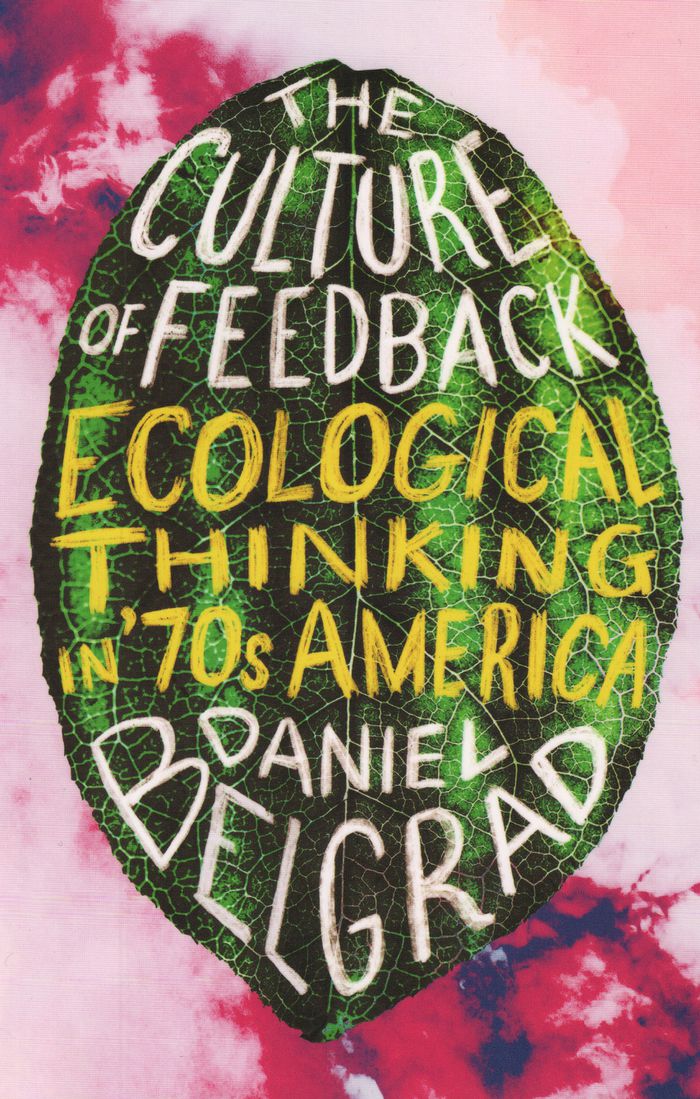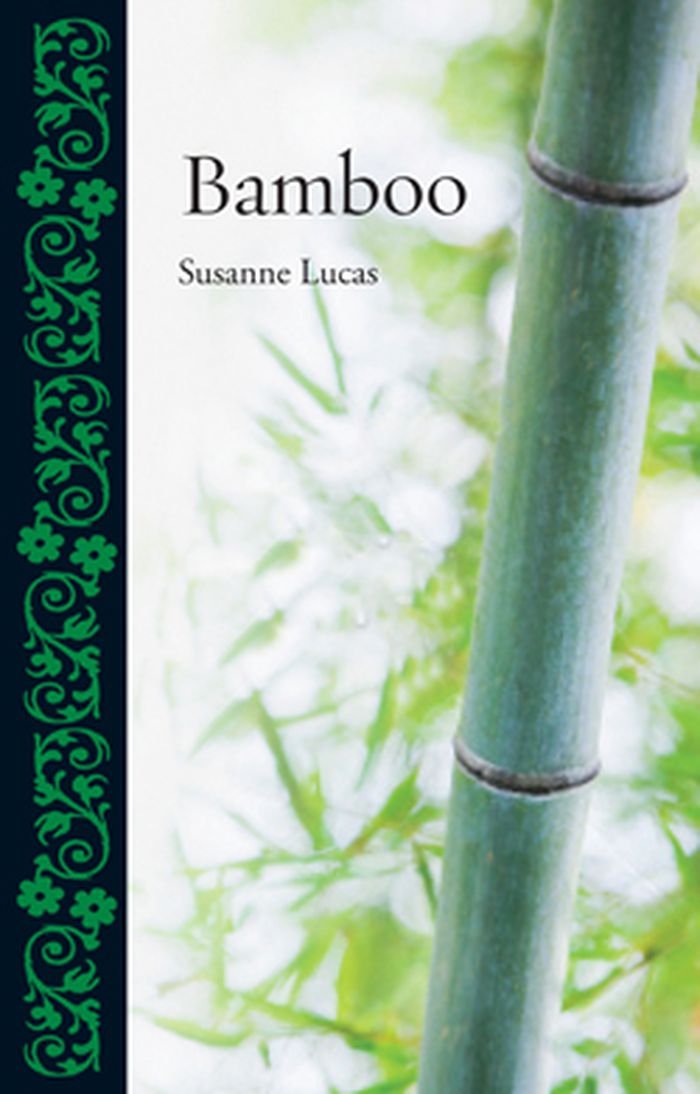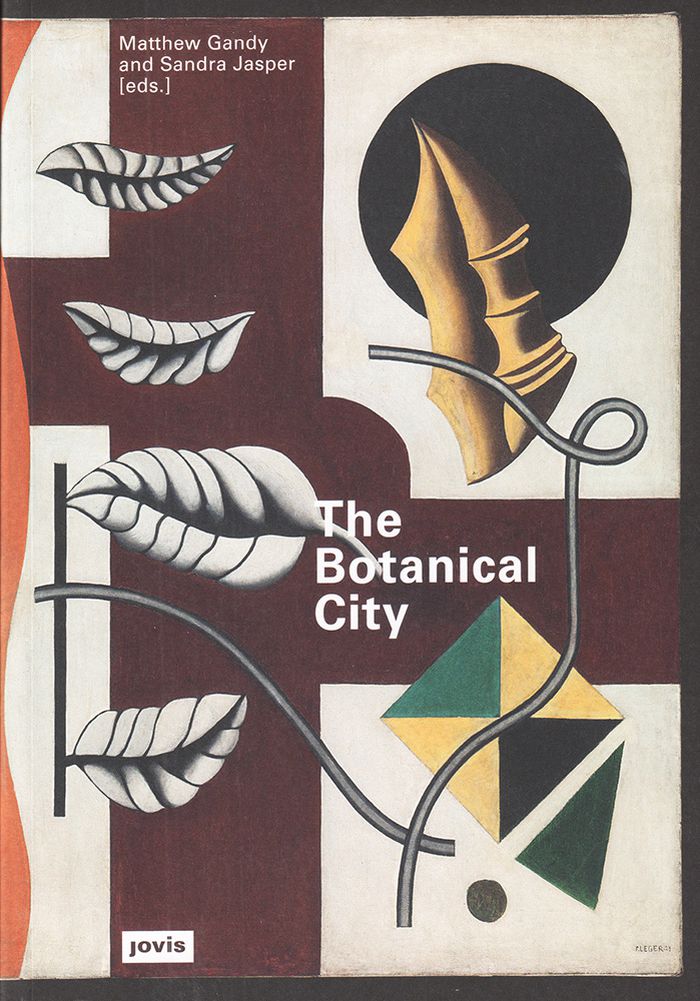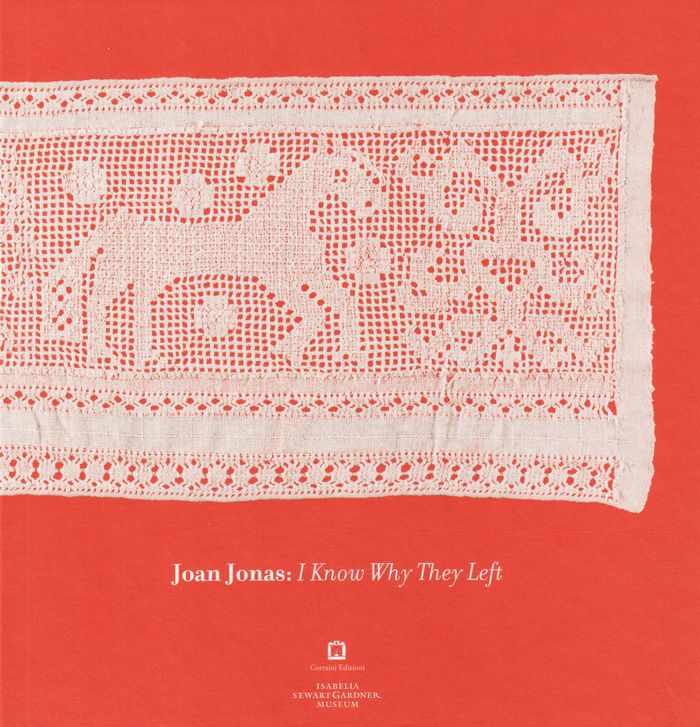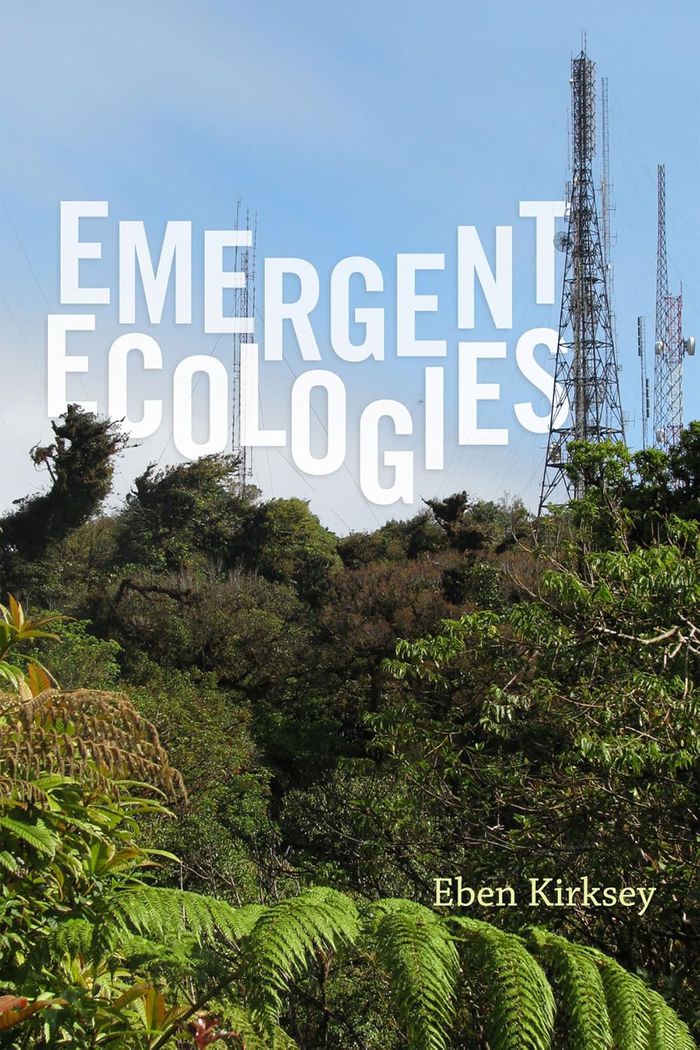$42.00
(available to order)
Summary:
'The Culture of Feedback' digs deep into a dazzling variety of left-of-center experiences and attitudes, and brings a new look at the wild side of the 1970s. The author shows us how ideas from systems theory were taken up by the counterculture and the environmental movement, eventually influencing a wide range of beliefs and behaviors, particularly related to the question(...)
The culture of feedback: ecological thinking in seventies America
Actions:
Price:
$42.00
(available to order)
Summary:
'The Culture of Feedback' digs deep into a dazzling variety of left-of-center experiences and attitudes, and brings a new look at the wild side of the 1970s. The author shows us how ideas from systems theory were taken up by the counterculture and the environmental movement, eventually influencing a wide range of beliefs and behaviors, particularly related to the question of what is and is not intelligence. He tells the story of a generation of Americans who were struck by a newfound interest in — and respect for — plants, animals, indigenous populations, and the very sounds around them, threading his tapestry with cogent insights on environmentalism, feminism, systems theory, and psychedelics.
Environment and environmental theory
The prehistory of home
$34.95
(available to order)
Summary:
Many animals build shelters, but only humans build homes. No other species creates such a variety of dwellings. Drawing examples from across the archaeological record and around the world, archaeologist Jerry D. Moore recounts the cultural development of the uniquely human imperative to maintain domestic dwellings. He shows how our houses allow us to physically adapt to(...)
The prehistory of home
Actions:
Price:
$34.95
(available to order)
Summary:
Many animals build shelters, but only humans build homes. No other species creates such a variety of dwellings. Drawing examples from across the archaeological record and around the world, archaeologist Jerry D. Moore recounts the cultural development of the uniquely human imperative to maintain domestic dwellings. He shows how our houses allow us to physically adapt to the environment and conceptually order the cosmos, and explains how we fabricate dwellings and, in the process, construct our lives. The Prehistory of Home points out how houses function as symbols of equality or proclaim the social divides between people, and how they shield us not only from the elements, but increasingly from inchoate fear.
Architectural Theory
$29.95
(available to order)
Summary:
Lucas describes how bamboo’s special characteristics, such as its ability to grow quickly and thus be an easily replaced resource, offers potential solutions to modern ecological dilemmas. She explores the vital role bamboo plays in the survival of many animals and ecosystems, as well as its use for some of the earliest books ever written, as the framework for houses, and(...)
Bamboo
Actions:
Price:
$29.95
(available to order)
Summary:
Lucas describes how bamboo’s special characteristics, such as its ability to grow quickly and thus be an easily replaced resource, offers potential solutions to modern ecological dilemmas. She explores the vital role bamboo plays in the survival of many animals and ecosystems, as well as its use for some of the earliest books ever written, as the framework for houses, and for musical instruments. As modern research and technologies advance, she explains, bamboo use has increased dramatically—it can now be found in the filaments of light bulbs, airplanes, the reinforcements of concrete, and even bicycles. Filled with illustrations, Bamboo is an interesting new take on a plant that is both very old and very new.
Landscape Theory
books
Description:
128 pages : illustrations ; 31 cm
Paris : Carré : Paris Musées, ©1991.
Les voitures d'Atget au Musée Carnavalet / Françoise Reynaud.
Actions:
Holdings:
Description:
128 pages : illustrations ; 31 cm
books
Paris : Carré : Paris Musées, ©1991.
$58.95
(available in store)
Summary:
Find hope to heal the relationship between our planet and all of its inhabitants, including humans, animals, and plants. Essays, visual narratives, and interviews explore practices of care and present possibilities for living differently in a fragile age. Artists and culture bearers consider bonds of love, responsibility, and reciprocity, encouraging consideration of our(...)
How to survive: Living with care in the climate crisis
Actions:
Price:
$58.95
(available in store)
Summary:
Find hope to heal the relationship between our planet and all of its inhabitants, including humans, animals, and plants. Essays, visual narratives, and interviews explore practices of care and present possibilities for living differently in a fragile age. Artists and culture bearers consider bonds of love, responsibility, and reciprocity, encouraging consideration of our inherent interdependence with one another, with other creatures, and with the planet itself. This anthology looks at how life, including plant, animal, and human life, can thrive through acts of harmony. In "How to survive", women and non-binary voices present ideas of interdependence, place-based knowledge, attentiveness, liberatory imagination, mending, repair, and activism offering visions of hope and adaptation, as well as novel ways of understanding our responsibilities to the planet.
Environment and environmental theory
The botanical city
$55.00
(available to order)
Summary:
Plant life is a subject frequently ignored in the context of urban theory, and the essays in 'The Botanical City' offer a fresh perspective into new ecological forms that continue to emerge in cities across the world. Much like the unique adaptive strategies of city-native animals, urban plants often become distinctively intertwined with their cities’ human(...)
The botanical city
Actions:
Price:
$55.00
(available to order)
Summary:
Plant life is a subject frequently ignored in the context of urban theory, and the essays in 'The Botanical City' offer a fresh perspective into new ecological forms that continue to emerge in cities across the world. Much like the unique adaptive strategies of city-native animals, urban plants often become distinctively intertwined with their cities’ human infrastructure, and this book explores both the scientific approaches to understanding these new ecologies and attempts on the part of writers and artists to engage with urban flora. Edited by the British cultural geographers Matthew Gandy and Sandra Jasper, the book comprises ecological reflections on city design, history, art and mapmaking, alongside philosophical excursions on the meaning of urban ecology in the Anthropocene.
Urban Landscapes
$50.00
(available in store)
Summary:
''Joan Jonas: I know why they left'', printed in conjunction with the 2019 exhibition at the Isabella Stewart Gardner Museum, is an artists book featuring full-colour reproductions of a new series of drawings by this seminal artist. As an Artist-in-Residence in 2017, Jonas was drawn to the vast array of mythical and archetypal animals present in the Gardners collection.(...)
Contemporary Art Monographs
September 2019
Joan Jonas: I know why they left
Actions:
Price:
$50.00
(available in store)
Summary:
''Joan Jonas: I know why they left'', printed in conjunction with the 2019 exhibition at the Isabella Stewart Gardner Museum, is an artists book featuring full-colour reproductions of a new series of drawings by this seminal artist. As an Artist-in-Residence in 2017, Jonas was drawn to the vast array of mythical and archetypal animals present in the Gardners collection. Drawn from objects made of lace, stone, metal, wood, and ceramic, or found in tapestries and paintings, the animal figures allude to the importance of natures life force in the face of disruptive human presence. In this book, which includes a conversation between Joan Jonas and Pieranna Cavalchini, Jonass ability to conjure wonder, fear, and humor through poetic imagery continues to work its magic.
Contemporary Art Monographs
Emergent ecologies
$45.95
(available in store)
Summary:
In an era of global warming, natural disasters, endangered species, and devastating pollution, contemporary writing on the environment largely focuses on doomsday scenarios. Eben Kirksey suggests we reject such apocalyptic thinking and instead find possibilities in the wreckage of ongoing disasters, as symbiotic associations of opportunistic plants, animals, and microbes(...)
Emergent ecologies
Actions:
Price:
$45.95
(available in store)
Summary:
In an era of global warming, natural disasters, endangered species, and devastating pollution, contemporary writing on the environment largely focuses on doomsday scenarios. Eben Kirksey suggests we reject such apocalyptic thinking and instead find possibilities in the wreckage of ongoing disasters, as symbiotic associations of opportunistic plants, animals, and microbes are flourishing in unexpected places. Emergent Ecologies uses artwork and contemporary philosophy to illustrate hopeful opportunities and reframe key problems in conservation biology such as invasive species, extinction, environmental management, and reforestation. Following the flight of capital and nomadic forms of life-through fragmented landscapes of Panama, Costa Rica, and the United States-Kirksey explores how chance encounters, historical accidents, and parasitic invasions have shaped present and future multispecies communities.
Environment and environmental theory
Cabinet 64: The Nose
$15.00
(available to order)
Summary:
Cabinet issue 64, with a special section on “The Nose,” includes Christopher Turner on Smell-O-Vision, Aromarama and other failed technologies for making cinema into an olfactory event; Jennifer Greenberg on how European colonialists characterized the relationship between race and nose shape; Anthony Harley on the political history of rhinoplasty in the US; and Thiago(...)
Cabinet 64: The Nose
Actions:
Price:
$15.00
(available to order)
Summary:
Cabinet issue 64, with a special section on “The Nose,” includes Christopher Turner on Smell-O-Vision, Aromarama and other failed technologies for making cinema into an olfactory event; Jennifer Greenberg on how European colonialists characterized the relationship between race and nose shape; Anthony Harley on the political history of rhinoplasty in the US; and Thiago Carvalho on the new scientific work on the relationship between smell, immunity and mating among animals. Elsewhere in the issue: Adam Bobbette on Indonesian men who train young birds to sing the songs of extinct birds; Indiana Seresin on the way a mythic Native American indigeneity has been used by children at American summer camps; Ara Merjian on the Situationists’ uses of Giorgio de Chirico’s early paintings, and more.
Magazines
$49.95
(available to order)
Summary:
This text covers every aspect of the trademark, its history, development, style, classification and relevance in today's world. A brief history is given of the origins of the trademark in heraldry, monograms, owner's marks and certificates of origin. The proceeding chapters explore corporate identity and communication design with an emphasis on sign theory. The core of(...)
Marks of excellence : the history and taxonomy of trademarks
Actions:
Price:
$49.95
(available to order)
Summary:
This text covers every aspect of the trademark, its history, development, style, classification and relevance in today's world. A brief history is given of the origins of the trademark in heraldry, monograms, owner's marks and certificates of origin. The proceeding chapters explore corporate identity and communication design with an emphasis on sign theory. The core of the book is a comprehensive classification of trademarks covering name marks, abbreviations and all kinds of picture marks. This is followed by an alphabetical index of trademark themes from animals to word puzzles. The index is illustrated by a selection of the world's best trademarks - the marks of excellence from which this book takes its name. The final section of the book covers the development of trademarks over time and across the boundaries of language and space.
Graphic Design and Typography
